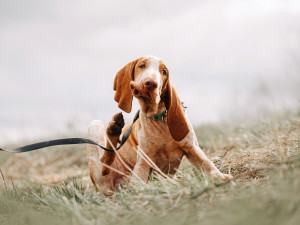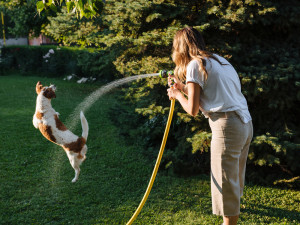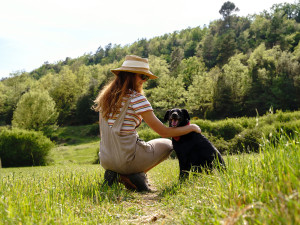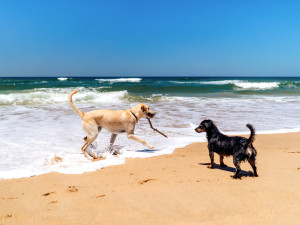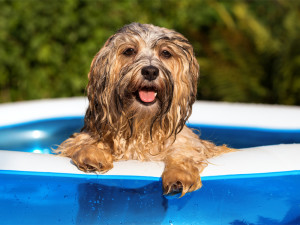How to Keep Your Dog Looking Fresh — Even When Summer Has a Different Goal
Bugs don’t stand a chance against a well-groomed pup.
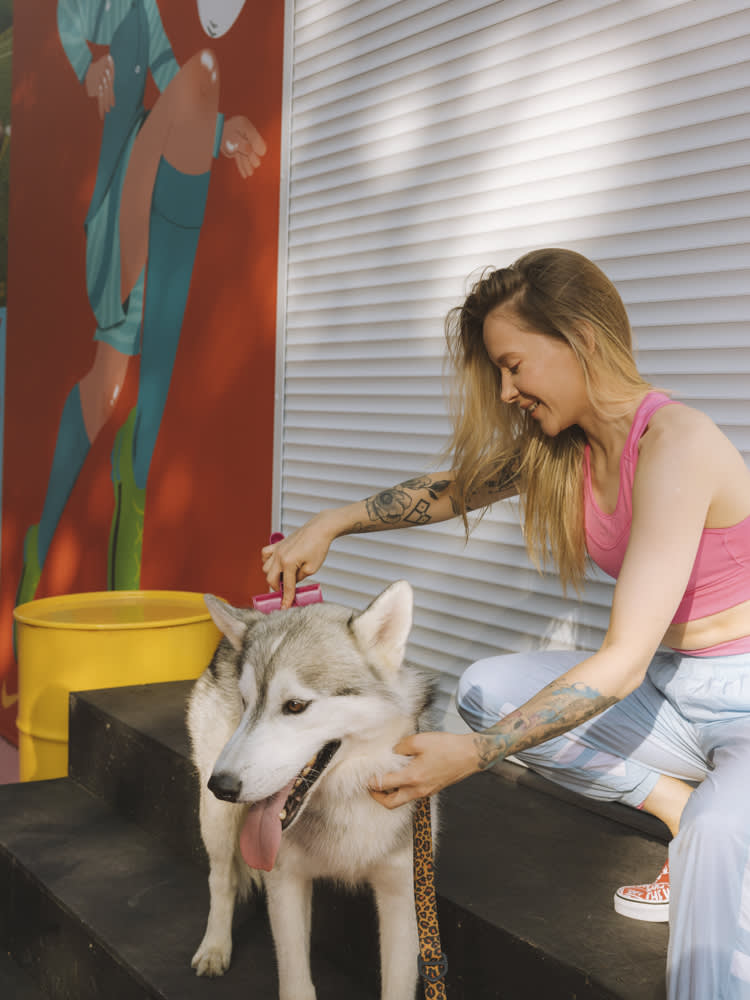
share article

Your pet wants you to read our newsletter. (Then give them a treat.)
Summer, especially with global warming, can feel a little less like a paradise for beach days and outdoor dinner parties and more like you’re stuck in the desert with no relief. If you’re hot and itchy, even with access to regular haircuts and bug repellant, imagine how your dog must feel, even with all that shedding.
Maintaining our dogs’ grooming routines is also important. It’s not all about looking good, though that’s certainly one motivator; it’s also about keeping a close eye on the condition of our dogs’ skin, ears, and nails — and solving small problems before they become big ones.
What Should I Do About My Dog’s Coat?
While some breeds require the services of a professional groomer, all dogs benefit from a good brushing, and you don’t have to be a pro to do that. A dog’s best friend is a grooming tool opens in a new tabappropriate for their coat type, one that strips out loose hair so air can circulate against their skin. Regular and thorough brushing also prevents mats, which are not only painful but also trap heat and moisture and can result in skin infections.
Experts tell us to resist the urge to shave down our dogs, particularly those with double coats, who can be quite comfortable as long as those coats are well cared for. Whatever its length and composition, a dog’s coat provides built-in climate control as well as a first line of defense against sunburn, twigs and stickers, among other things.
What About Pests?
This is also the time of year to be particularly vigilant about ticks and fleasopens in a new tab. The former can carry disease and the latter can quickly set up housekeeping on your dog — and in your house — if not managed. This is another reason to be conscientious about wielding the brush, rake, or comb of your choice. While your dog may or may not agree, adding an extra bath or two is also a good summer strategy. Brush before and after, choose a shampoo that’s a good match for their skin and coat type (or make your own), lather once and rinse well.
Check for Infections
Check your dog’s ears regularly, particularly if swimming is on their playlistopens in a new tab. Dogs whose ears fold over opens in a new tabare prone to ear infectionsopens in a new tab, which wet ears promote. Some groomers pluck hair from a dog’s ear canal, but vets advise against this because the hair pores will secrete extra serum, providing another excellent medium for infection. After your dog takes a dip, wipe the inside earflap gently with a cotton ball; if your vet says it’s OK, you can also use drops that contain a drying agent. According to the Dog Owner’s Home Veterinary Handbookopens in a new tab, a drop of white vinegar will also help prevent “swimmer’s ear.”
In the “of course” category, continue to brush your dog’s pearly whites and pay attention to their paws. Check between their toes for ticks, foxtailsopens in a new tab, brambles or other debris, and trim their nailsopens in a new tab.
None of this is rocket science: just good old-fashioned conscientiousness. And the payoff is so worth it: a dog who feels good and smells good, plus far fewer fur-bunnies rolling across the floor and lurking under the couch.
Chloe Conrad
Chloe Conrad is a freelance writer and editor in the San Francisco Bay Area.
Related articles
![A woman spraying her excited dog with a garden hose in the grassy backyard]() opens in a new tab
opens in a new tab7 End-of-Summer Activities for You and Your Dog
Stay cool out there.
![A dog with its head sticking out the window of a moving car.]() opens in a new tab
opens in a new tabPlanning a Pup-Friendly Road Trip
Your dog is your favorite person anyway — why not plan the perfect vacation with them?
![man paddles in kayak with brown dog]() opens in a new tab
opens in a new tabIntimate Guide to Kayaking with Dogs: Tips, Safety, and Adventure Ideas
Bring your pup with you on your next adventure.
![A woman in beige overalls a striped shirt and a straw hat, smiling, with her arm around her black dog sitting in the grass on a green hill.]() opens in a new tab
opens in a new tabThe Best Flea and Tick Preventatives and Treatments For Dogs
Treatments to ward off transmission this flea and tick season.
![Labrador Retriever and Dachsund playing with a stick at the beach shoreline]() opens in a new tab
opens in a new tabSummer Is Heating Up. Here’s How to Keep Your Dog From Doing the Same
Pro tips to keep your pup safe, happy, and exercised during the warmer months.
![a dog in a dog pool]() opens in a new tab
opens in a new tabThe Best Dog Pools For Your Dog to Splash Around in This Summer
It’s summer fun time, baby.

